Naval Battle of Vella Lavella: BAA BAA BLACK SHEEP SQUADRON
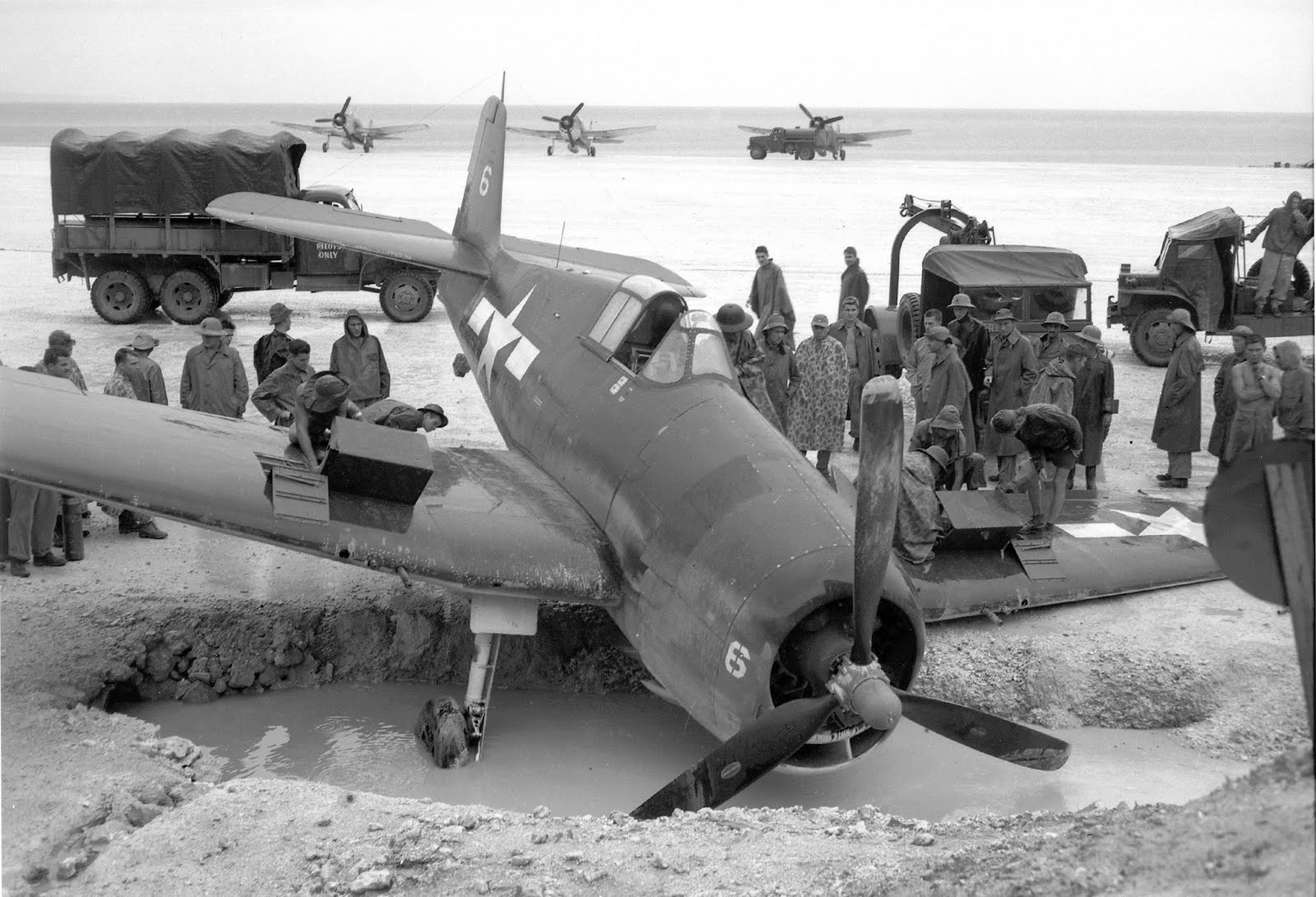 |
| |
 |
| At this point Commander Oosako Azuma of YUGUMO, at the rear of Ijuin's column, apparently decided to take matters into his own hands, for at 2256 YUGUMO suddenly broke formation and charged the Americans, opening gunfire and launching torpedoes as she went. The intrepid destroyer also promptly began taking hits, and was soon reduced to a battered wreck. But YUGUMO's bold attack had turned the tide of battle. At 2301 a YUGUMO Long-Lance found CHEVALIER's forward magazine and the resulting explosion tore the destroyer's bow off as far aft as the bridge. O'BANNON, next in line, then plowed into CHEVALIER's stern, thus quickly reducing Walker's strength by two-thirds. This success was YUGUMO's last, for at 2303 the blazing destroyer took at least one American torpedo in return, blew up, and sank at 2310. Admiral Ijuin, observing YUGUMO's sacrifice from afar, disconsolately turned south and then west, making smoke to cover his withdrawal. But Captain Walker in SELFRIDGE was not yet done: his flagship continued plunging ahead to engage SHIGURE and SAMIDARE, now steering across his front at high speed to join Ijuin. Captain Hara's destroyers got off a spread of 16 Long-Lances and at 2306 one of SAMIDARE's caught SELFRIDGE on her port side forward, bringing her to a stop and all but ending the battle. By this time Captain Larson's three-ship division was a mere 15 minutes away from joining in the fray, but Ijuin's recon plane advised him of this fact and the admiral, not wishing to engage any more "cruisers," ordered retreat. Thus unable to find any enemy to engage, Larson set about succoring Walker's cripples. Both SELFRIDGE and O'BANNON, bows shattered, were able to limp home, but CHEVALIER was beyond salvage and LAVALLETTE scuttled her with a torpedo at 0311; all but 51 of her crew had earlier been removed. PT-boats later rescued 78 YUGUMO survivors while another 25 reached safety in an abandoned O'BANNON lifeboat. Commander Oosako was not among them. While the above rescue operations were underway, Captain Nakayama Shigoroku's little convoy of barges and sub-chasers chugged purposefully into Marquana Bay, took on the 589 evacuees, and sailed for Buin at 0305, mission accomplished.
USS Coral Sea (CVB-43), Skyraiders & CorsairsThough much has been made of Ijuin's missed chances and the fact that "evacuations don't win wars," it would be both unrealistic and unchivalrous to assert that Vella Lavella was anything but a Japanese victory. Ijuin's forces knocked out three American destroyers for the loss of one of their own, and Nakagawa's vulnerable small-craft pulled off the troop evacuation without loss. Captain Walker was admittedly out-numbered, but this was only the more reason for him to have been more circumspect in his moves. He was not, and it was left for the Long-Lancers to blast out yet another chapter in their long record of night-fighting prowess.
Naval Battle of Guadalcanal Portland_in_Sydney_1942BackgroundAfter their defeats on New Georgia and in the Battle of Vella Gulf, the Japanese had evacuated their garrisons in the central Solomons. A staging post had been established at Horaniu on the north tip of Vella Lavella for the evacuation barges. In October 1943, 600 soldiers remained, and a force of nine destroyers—Fumizuki, Matsukaze, Yūnagi, Akigumo, Isokaze, Kazegumo, Yugumo, Shigure, Samidare—was dispatched under Rear-Admiral Matsuji Ijuin to rescue them. BattleAt 22:30, they spotted a U.S. force of three destroyers—Selfridge, Chevalier, and O'Bannon, commanded by Captain Frank R. Walker—approaching from Vella Gulf. A second division of three U.S. destroyers—Ralph Talbot, Taylor, and La Vallette—was also sailing up the west coast of Vella Lavella. Walker did not wait for his other three destroyers to come up but attacked immediately. Both sides launched torpedoes and opened fire at about 23:00. Yugumo, first in the Japanese line, was hit several times, knocking out her steering, and she was finished off by a torpedo and sunk at about 23:10. However, one of her torpedoes hit Chevalier, detonating the forward magazine. O'Bannon then collided with the crippled Chevalier, and for some time the two ships were locked together. Selfridge attacked alone and was hit by a torpedo at 23:06 and disabled. All three ships were severely damaged, and reinforcements were still 15 minutes away. However, the rest of the Japanese turned away, having perhaps misidentified the three approaching destroyers as cruisers.
Naval Battle of Guadalcanal NavalGuadalcanalWashingtonAftermathShigure and Samidare off Bougainville just hours before the battle. Chevalier could not be saved and was sunk around 03:00. The Japanese completed their evacuation mission, ending the second phase of Operation Cartwheel with the Allied capture of the central Solomons after a three-month campaign that cost the Allies six ships; the Japanese lost 16.
VF-2 Grumman F6F-3 Hellcat fighter catapult launch from 'Hornet'From the USS Hornet (CV-12) hangar deck; five Essex class carriers were equipped with a hangar deck catapult, and the launching aircraft faced crosswinds as high as 35 knots when being shot out the side of the carrier. National Archives Photos from Navy History Center
Naval Battle of GuadalcanalAbout this USS Hornet: As a carrier operating near Japan, Hornet was a prime target for whatever air power Japan had left. During the last 16 months of the war, she sustained 59 air attacks. But her pilots destroyed 1,410 Japanese aircraft and sank 1,269,710 tons of Japanese shipping. After the war, Hornet participated in Operation Magic Carpet that brought American service men back to the United States. She returned to San Francisco on 9 Feb 1946, being decommissioned there in Jan 1947. She was recommissioned in 1951 for tension with Communist expansion in China and remained generally in the Pacific area on a wide array of missions, including the recovery of manned and unmanned spaceships of the Apollo program. She was decommissioned in 1970. Since 1998 she has been a museum ship at the former Alameda Naval Air Station in Alameda, California. |
|
 |










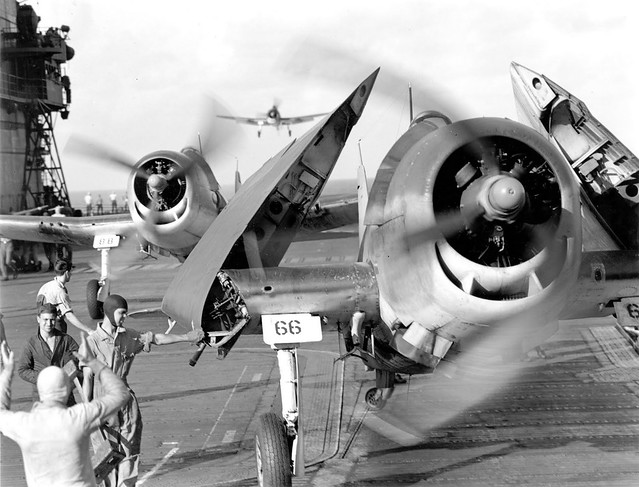
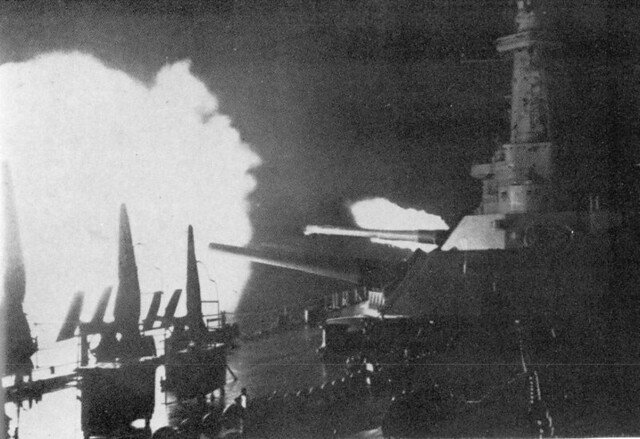
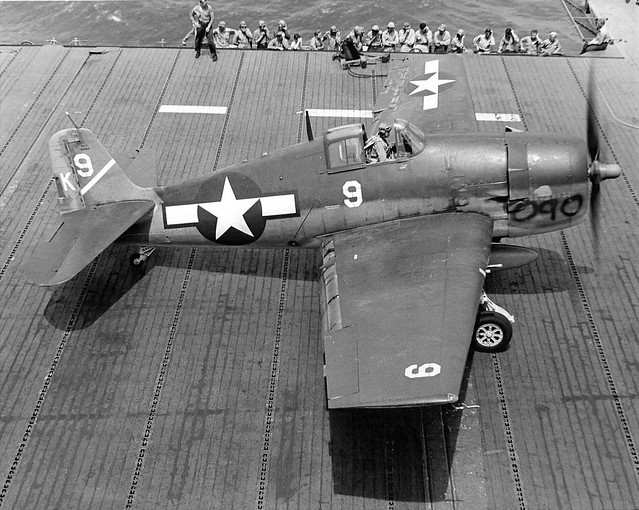
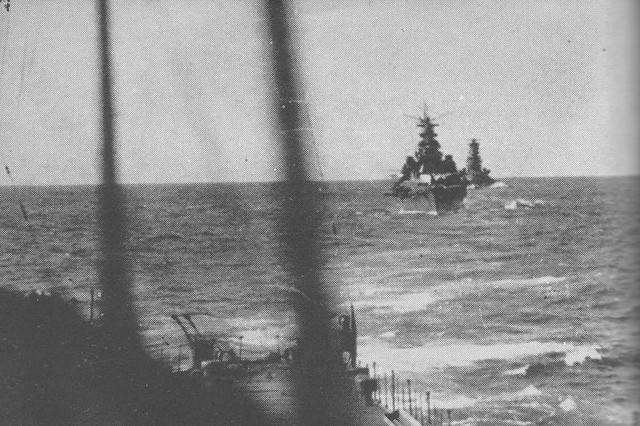

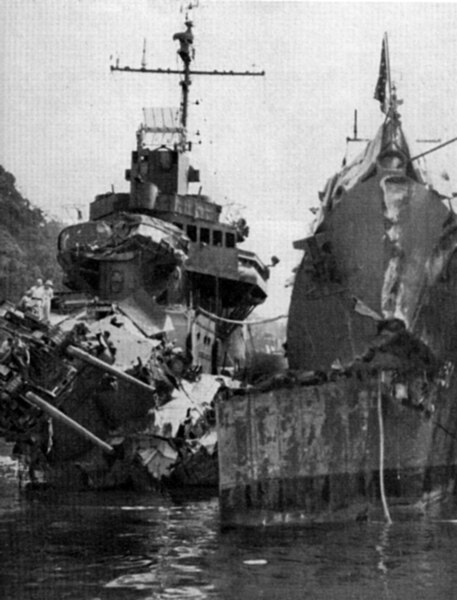
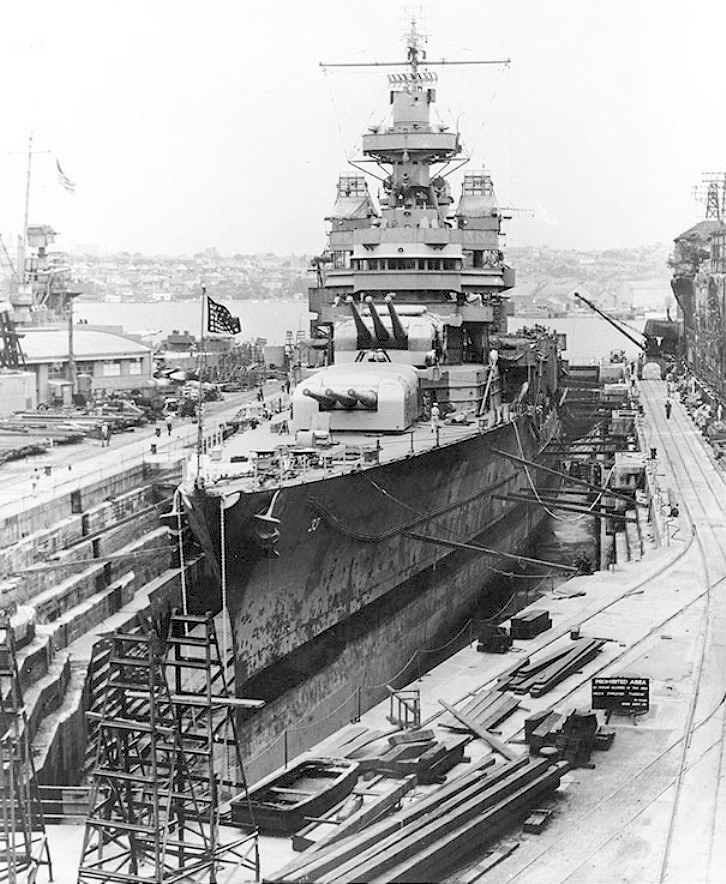

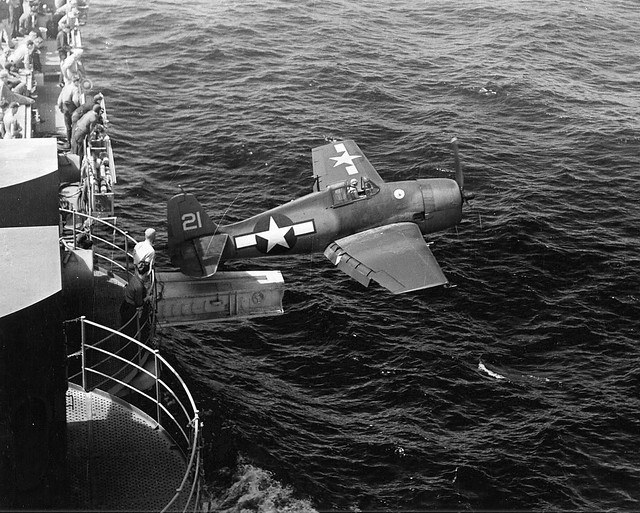
No comments:
Post a Comment